#PRISM: Exploring the Science of #Mariology #AI

Applying the PRISM Framework to a variety of concepts and situations can be fun. Here’s one that I found relevant to many Catholic educators tasked with teaching science.
Note that this blog entry is a personal area of interest with no ties to any organization, including the Archdiocese of San Antonio, non-profit education organizations or universities cited.
Are you a Catholic school Science teacher? I have students requesting lessons in the science of Mariology. They are interested in how the tilma of Our Lady of Guadalupe survived the fire and bomb, its temperature, its durability even though it’s made of cactus fibers, etc. Also the carbon dating of Our Lady of Loreto, theories explanation the Sun’s actions at Our Lady of Fatima, etc. they’re especially interested though in non-Euro apparitions (Kibeho, Akita, etc). Does anyone have any lessons on these? TIA
-Janie
Yes, I have been a Catholic educator. I taught sixth grade at St. Mary Magdalene’s Catholic School in San Antonio, Tx. What a great time that was. When I spotted this question from Janie in a Facebook group, I had to respond. Having grown up Catholic, attending Catholic schools (e.g. St. Mary’s School in the Canal Zone, Panama, Holy Spirit School, and Central Catholic High School in San Antonio), I was intrigued by the request.
I confess (pun intended) that I was fascinated by the juxtaposition of Mariology and Science in the same sentence. Having been a Catholic school educator for a part of my career, and knowing many fellow educators are Catholic school teachers and leaders, I couldn’t pass this opportunity up. In this blog entry, I’ll share the PRISM Framework and how you can apply it. Whatever one’s beliefs, scientific thinking should always be encouraged. There’s also a three-day lesson plan for you.
Defining Terms
Since many public school educators may be unfamiliar with Mariology, let’s take a moment to define that. Also, explore what is meant by “scientific thinking.”
Mariology is the study of the Virgin Mary. The study of the Virgin Mary, Mother of Jesus the Christ, provides an avenue which students can take in learning critical thinking. They can explore their faith as well as examine empirical evidence.
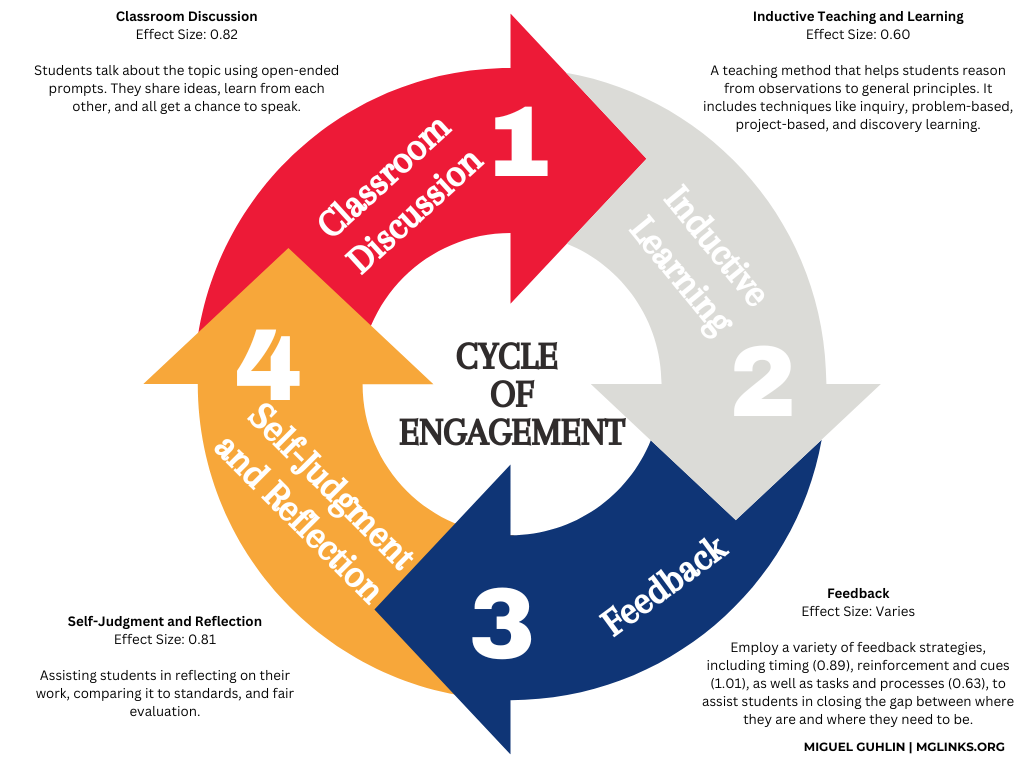
The Cycle of Engagement
As a teacher, you can initiate a cycle of engagement for your students. This cycle of active engagement begins with classroom discussion, continues with inductive learning. There’s a lot to unpack in the cycle of engagement, given that a lot of Surface Learning needs to take place first. Here’s how I see it playing out:
- Surface Learning. Students may have little or no knowledge of Mariology except stories taught to them. They will have to also learn about skeptical thinking, and one way to introduce them to this foundational knowledge is through classroom discussion, direct instruction, and other strategies.
- Deep Learning. Once students have built foundational knowledge in this area, they can start to build connections. This may result in idea sharing, inductive teaching and learning opportunities. Along the way, they receive feedback, reinforcing and cueing them on scientific thinking, as well as tasks and processes they are engaged in. Throughout they reflect on their work.
- Transfer Learning. Once they have a foundation, they can begin to expand their analysis of phenomena to fresh situations.
Students can rely on high-effect size instructional strategies that result in a cycle of active engagement. Strategies include ones like various types of feedback:
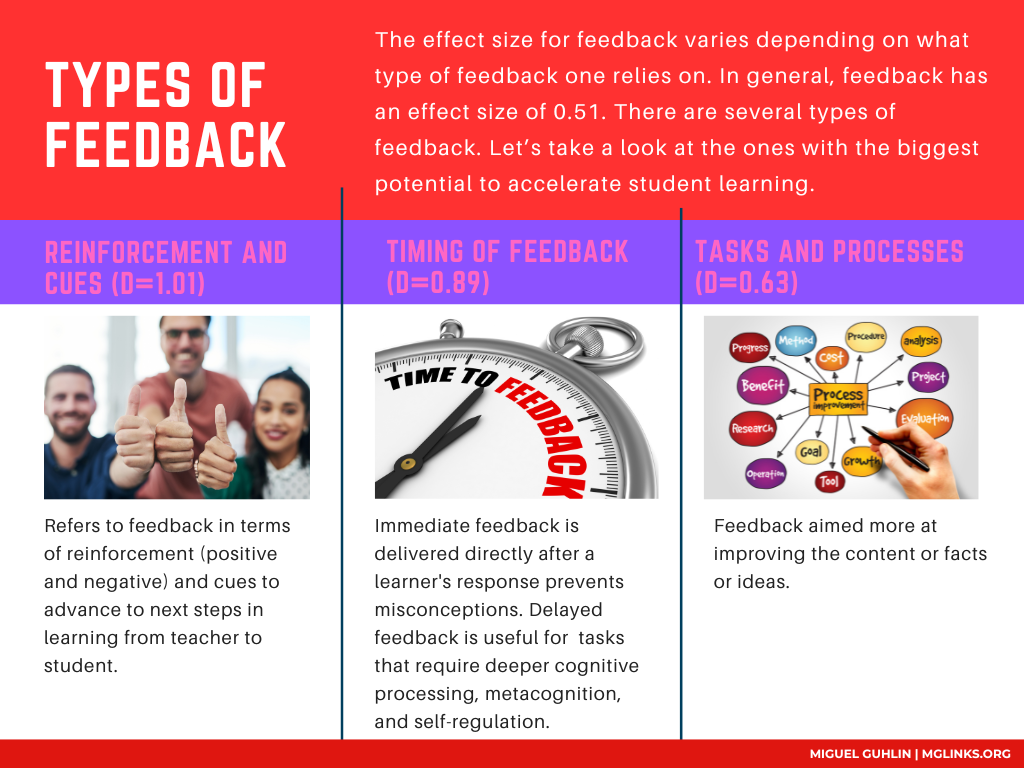
Let’s take a closer look at the strategies in the cycle of engagement. The cycle includes four strategies, including:
- Classroom Discussion. Effect size is 0.82.
- Inductive Teaching and Learning. Effect size is 0.60.
- Feedback. The effect size for feedback varies depending on what type of feedback one relies on. In general, feedback has an effect size of 0.51. In this case, one might rely on:
- Reinforcement and Cues (d=1.01). Refers to feedback in terms of reinforcement (positive and negative) and cues to advance to next steps in learning from teacher to student.
- Tasks and Processes (d=0.63). Feedback aimed more at improving the content or facts or ideas.
- Timing of Feedback (d=0.89). The timing of feedback – immediate or delayed.
- Self-Judgment and Reflection (d=0.81). Assisting students in reflecting on their work, comparing it to standards, and fair evaluation.
These strategies create a cycle of active, continuous engagement that enhance critical thinking skills.
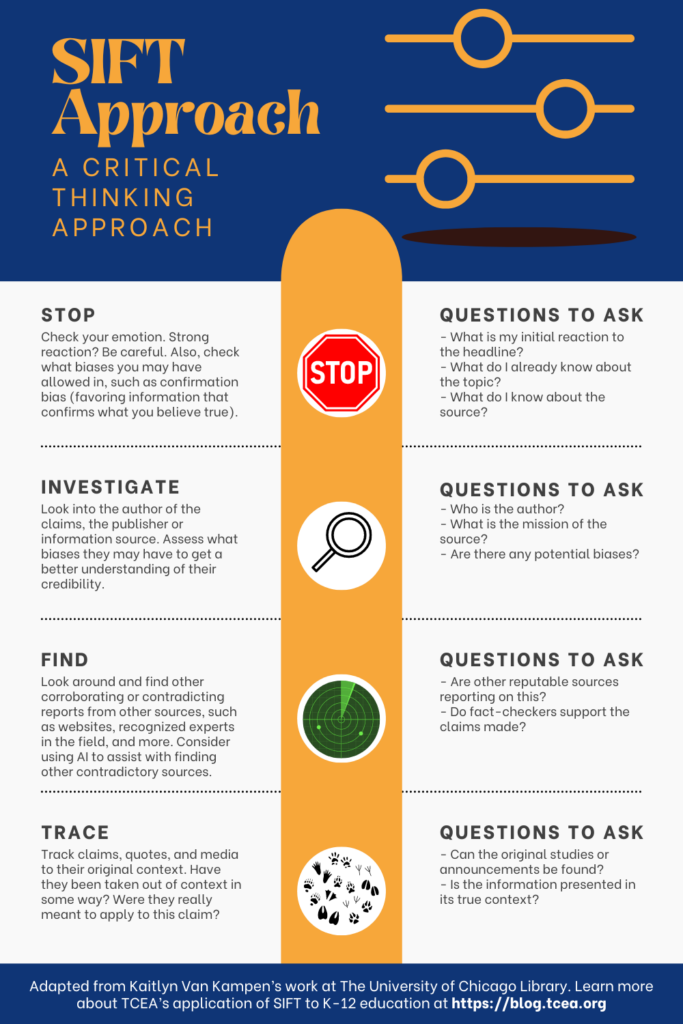
View | Get a Copy in Canva | Get PPTx or PDF
Offsetting Digital Illiteracy
A recent post in an online forum I read reveals the issues many students face with digital illiteracy:
Research shows that while students are highly proficient in using digital tools, only 2% of eighth-graders demonstrate the ability to analyze and manage information effectively (Washington Post). Meanwhile, just 19% can independently gather and organize digital data. These statistics highlight a critical gap in digital literacy, leaving students unprepared to critically assess the platforms they engage with. (Source: Lori Gracey, TCEA Community)
To address that issue, the post author suggests a list of resources. Here’s is an abbreviated list of relevant items from the poster’s complete list:
- A SIFT Lesson Plan: Critical Skills for Analyzing Media
- Resources for Teaching Students to Fact Check
- Going Beyond Digital Literacy: Fostering Readers as Learners
- One Strategy for Combatting Pseudosciencee
The resulting outcomes from the Cycle of Engagement, and the inclusion of strategies like SIFT Method and FLOATER, include:
- Improved understanding
- Critical thinking
- Communication
You can augment the critical thinking through the use of approaches that offset digital illiteracy. But how does a teacher facilitate student learning in a way that moves from simple to complex? This is where the PRISM Framework comes into play.
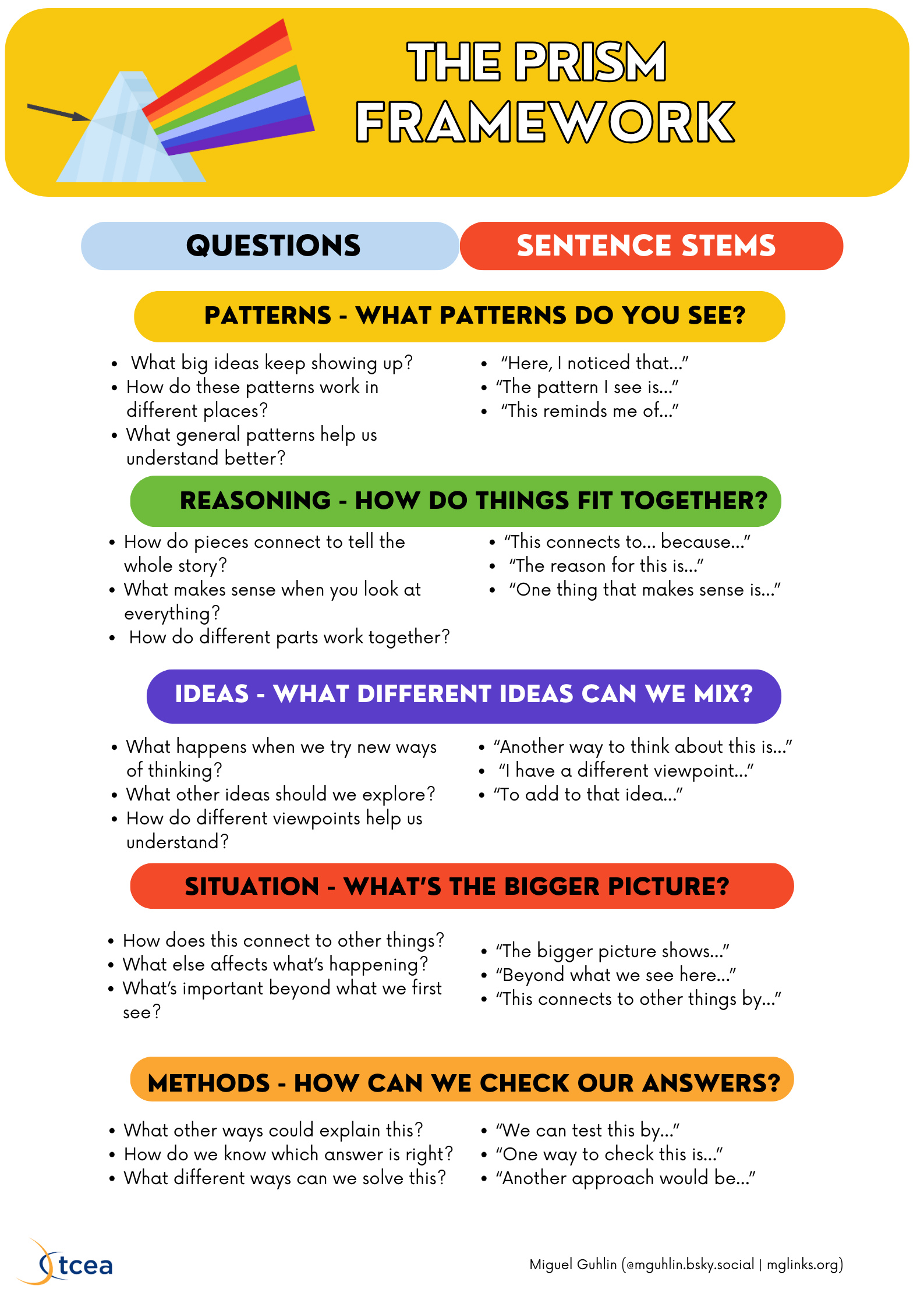
Facilitating the Shift
To facilitate the shift from simple to complex, the PRISM framework, built on the excellent work of the SOLO Taxonomy, offers a scaffolded approach. In case you are not familiar with the PRISM Framework, it is a way to support one’s own or another’s gradually growing understanding of a new topic. I like to think of it as a way to accelerate my own thinking through the reflection on questions about a topic.
The PRISM framework sets out to guide you from simple to complex thinking by asking a series of questions:
- Patterns. What Patterns do You See? What big ideas keep showing up? How do these patterns work in different places?
- Reasoning. How do things fit together? How do pieces connect to tell the whole story? What makes sense when you look at everything? How do these different parts work together?
- Ideas. What happens when we try new ways of thinking? What other ideas should we explore? How do different viewpoints help us understand?
- Situation. How does this connect to other things? What’s important beyond what we first see?
- Methods. What other ways could explain this? How do we know which answer is right? What different ways can we solve this?
In addition to questions, PRISM offers sentence stems for each stage. You can see them elaborated on in these blog entries.
Applying the PRISM Framework
To apply the PRISM framework to a topic like Mariology, we have to set aside questions of faith and belief. That is, our goal is an open conversation that sets aside our unproven beliefs and unsubstantiated biases. Instead, we apply a skeptical thinking approach that invites students to explore what is known.
In this situation, I am reminded of the words of Khalil Gibran, The Prophet.
The teacher who walks in the shadow of the temple, among his followers, gives not of his wisdom but rather of his faith and his lovingness.
If he is indeed wise he does not bid you enter the house of his wisdom, but rather leads you to the threshold of your own mind.
As teachers, we invite students to explore the threshold of their own minds. The PRISM Framework scaffolds this progression for students. Let’s see how that might be.
PRISM Framework in Action
This lesson plan employs the PRISM framework to:
- Identify Patterns in eyewitness accounts.
- Reason with scientific explanations.
- Ideas by designing experiments to explore new ways of thinking.
- Situate findings in cultural and historical contexts.
- Methodically approach investigations.
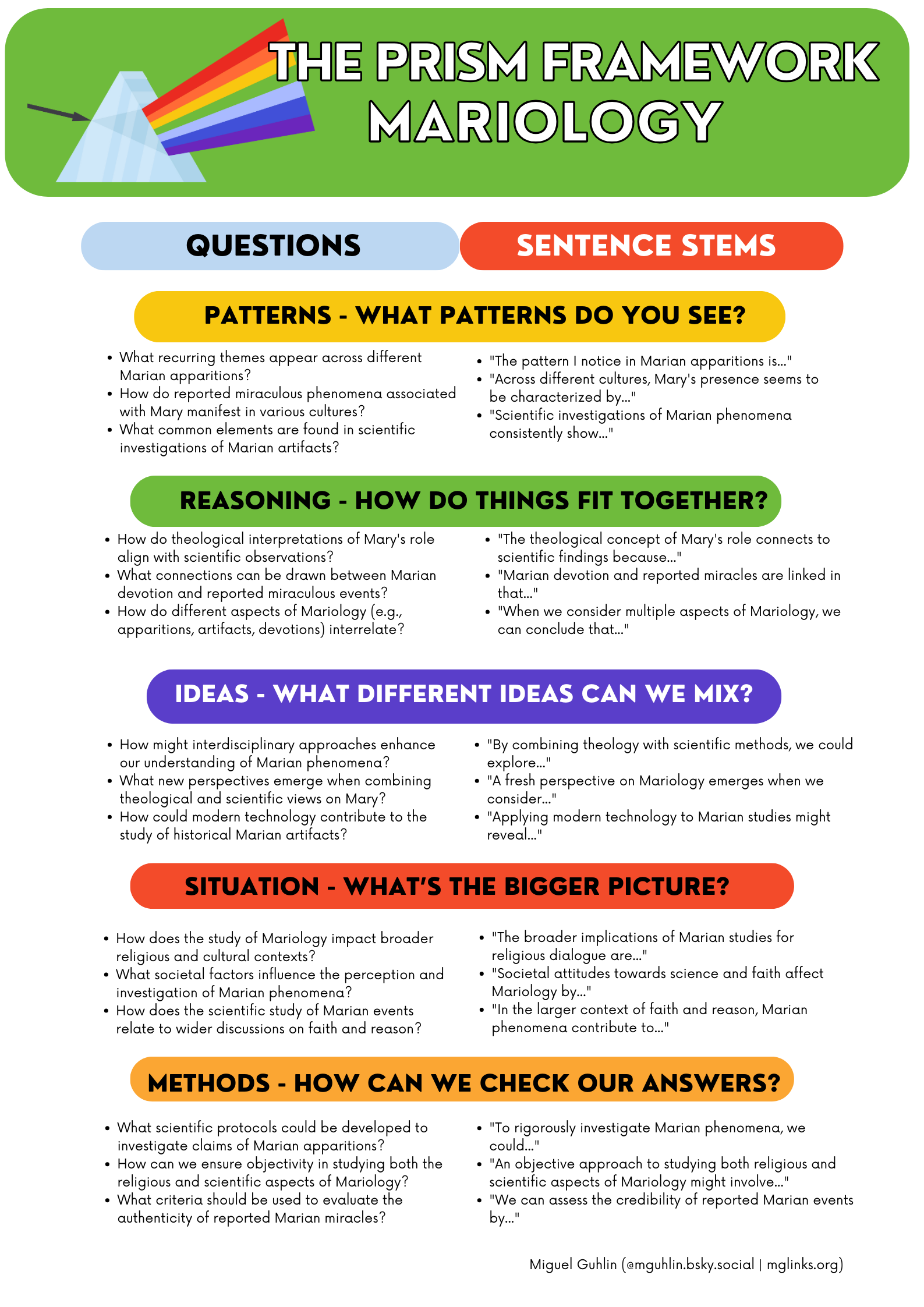
Exploring Mariology: A Scientific Perspective
Mariology, the study of the Virgin Mary, offers a unique intersection of theology, culture, and science. For educators, it provides a fascinating lens to engage students in critical thinking while exploring faith and empirical evidence. Here’s a three-day lesson plan that introduces students to:
- Scientific aspects of Marian apparitions
- Balances inquiry with cultural respect
- PRISM Framework
In Day 1, students discuss Mariology and the PRISM Framework. The stage is set with the story of Our Lady of Guadalupe and Juan Diego. In the story, the Lady appears to Juan Diego, a convert to Christianity, in 1531. Afterwards, the cloak (a.k.a. “tilma”) Juan Diego wears appears to have the image of the Virgin Mary, the Lady of Guadalupe, imprinted on it. Students could test fabric samples of a tilma (made of cactus fibers) for change over time. This simulates a real-world investigation.
On Day 2, the exploration continues through the study of optical illusions, meteorological phenomena, psychological explanations, etc. The subject of the study is another, alleged appearance of the Virgin Mary at Fatima. The goal is to brainstorm scientific explanations for events.
On Day 3, students expand their exploration of Virgin Mary apparitions from Kibeho to Akita. They focus on reported physical phenomena, and balance scientific inquiry with respect for religious beliefs.
You can see the lesson plans (generated with AI assistance) for each day fully elaborated in this Google Doc (get a copy).
Conclusion
Exploring Mariology through science deepens students’ grasp of culture and inquiry. It builds respect and curiosity. Catholic school educators, even those concerned with science teaching, can give students tools to tackle tough topics with sharp minds and open hearts.